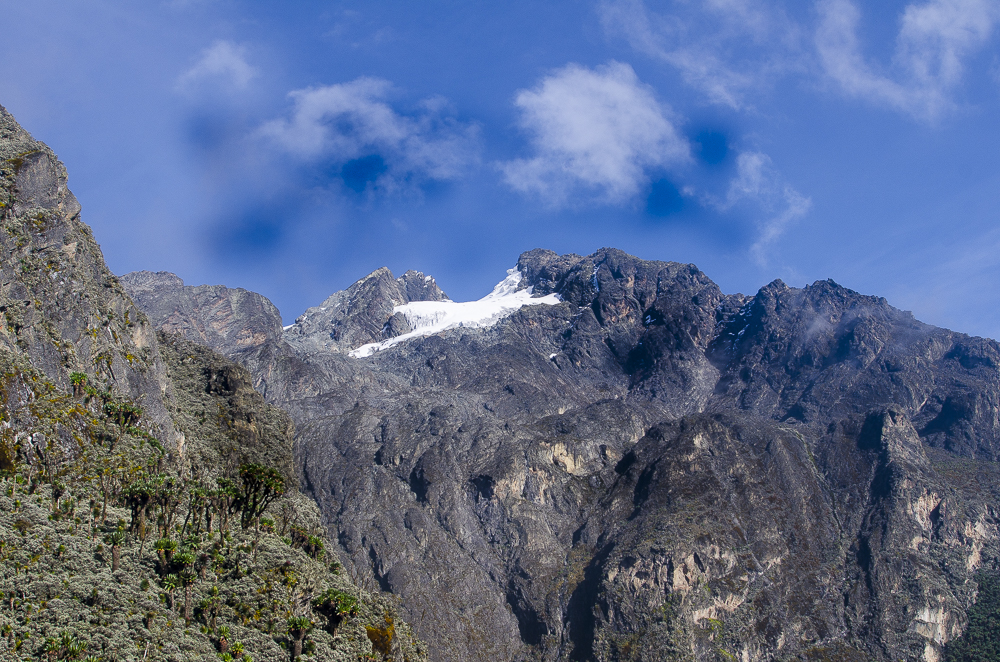Rwenzori Mountain formation was witnessed over 3 million years ago. Rwenzori Mountains are located in western Uganda and are shared by both Uganda and Democratic Republic of Congo (DRC). Sitting at an altitude of 5,109m above sea level, it provides a memorable and rewarding mountain hiking safari experience, in addition to offering an opportunity to see nature at its natural and beautiful state.

Rwenzori Mountain in Uganda is the third highest mountain in East Africa and Africa at large, just after Mount Kirimanjaro and Mout Kenya. The Rwenzori Mountains are many times been identified with the legendary name ‘Mountains of the Moon’, depicted in antiquity as the source of the Nile River. Margherita Peak, at 5,109m is the highest peak on the ranges which makes it the third highest peak in Africa, together with its twin peak, Mount Stanley, which is within the park. There are five other peaks on Mountain Rwenzori.
Around the 19th and early 20th centuries, it is documented on the Rwenzori Mountains formation that the first traverse of the six massifs of the Rwenzori Mountains was done in 1975. This started on 27th January and ended on 13th February. The traverse was done by Polish climbers Janusz Chalecki, Stanisław Cholewa and Leszek Czarnecki, with Mirosław Kuraś accompanying them on the last half of the traverse.
Studies on Formation of Rwenzori Mountain
The 5km‐high Rwenzori Mountains in the East African Rift forms a promontory on the rift shoulder and are an extreme expression of rift‐mountain uplift. This study reports the pattern and the kinematics of major faults in the Rwenzori region. Which is the most identical extreme expression of rift‐mountain uplift on Earth. With such extreme uplift occurring, it explains the extension of crust and its challenging geodynamic problems.
Rwenzori Mountain formation study describes the structural architecture and the kinematics of rift faults that accomplished this extreme uplift. It also reviews aspects of the glaciations history of the Rwenzori Mountain formation and comments on possible relationships between the glaciations, faulting and rift‐mountain uplift along the East African Rift.
During the Rwenzori Mountain formation, the flexural models assume that footwalls were uplifted as coherent blocks. Facts ascertain that the Rwenzori Mountains were indeed uplifted as a single coherent horst in the footwall of back‐to‐back faults. It is important to note that smaller blocks were uplifted at different times along a number of small‐scale faults.
A lot is desired on the formation of Mountain Rwenzori but many visitors that hike Rwenzori Mountains have at the same time visited Mountain Elgon with the largest volcanic base in the world. Located on the Uganda-Kenya border it is also the oldest and largest solitary, volcanic mountain in East Africa. Its vast form, 80km in diameter, rises more than 3,000m above the surrounding plains. The mountain’s cool heights offer respite from the hot plains below, with the higher altitudes providing a refuge for flora and fauna.
